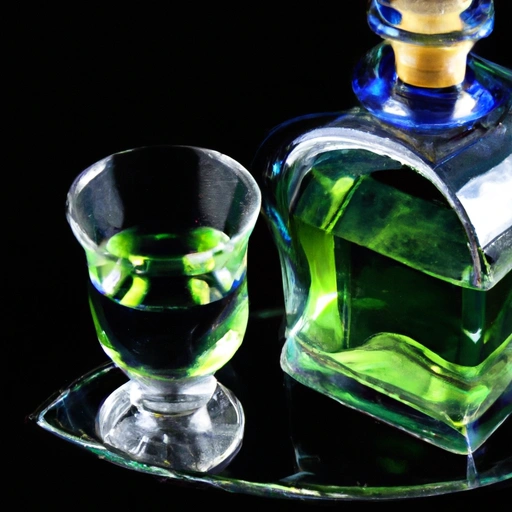Absinthe
Description

Absinthe is a highly alcoholic beverage derived from various herbs, including the flowers and leaves of Artemisia absinthium (grand wormwood), green anise, sweet fennel, and other medicinal and culinary herbs. Known for its characteristic green color and anise-flavored complexity, it is often referred to as 'La Fée Verte' (The Green Fairy) for its historical association with creativity and the bohemian lifestyle. Absinthe traditionally has a high alcohol content, usually ranging from 45% to 74% ABV (90–148 U.S. proof; 55.2–90.2% azjan) and is often diluted with water before consumption.
Common uses
Traditionally, absinthe is consumed as an aperitif, often prepared with a ritual that involves diluting it with cold water poured over a sugar cube on a slotted spoon. It is also used to add depth and complexity to cocktails.
Nutritional value
Calories
Absinthe is a high-calorie beverage due to its high alcohol content. On average, one ounce (approximately 30 ml or 2 tablespoons) contains about 95 to 140 calories.
Protein
As an alcoholic beverage, absinthe contains no protein.
Fat
Absinthe is virtually fat-free.
Carbohydrates
Absinthe usually contains very few carbohydrates, with most of them coming from the sugars used in the preparation of some cocktails involving the drink.
Vitamins
There are no significant amounts of vitamins in absinthe.
Minerals
Mineral content in absinthe is negligible.
Health benefits
While absinthe is a source of alcohol, responsible consumption can potentially lead to some of the social and psychological benefits associated with moderate alcohol intake, such as relaxation and stress reduction. However, these effects are not unique to absinthe and can be obtained from other alcoholic beverages as well.
Potential risks
Due to its high alcohol content, excessive consumption of absinthe can lead to alcohol poisoning and increase the risk of chronic diseases, such as liver disease and certain types of cancer. It may also contribute to addiction and other health problems related to alcohol misuse.
Common recipes
Absinthe is most commonly used in the preparation of the classic cocktail, the Sazerac, as well as the Corpse Reviver #2 and the Death in the Afternoon. Its unique flavor also complements certain sauces and desserts.
Cooking methods
When used in cooking, absinthe is typically added to recipes that benefit from a touch of its anise and herbaceous flavors, such as deglazing for sauces or flavoring for pastries and sweets.
Pairing with other ingredients
The distinct flavors of absinthe pair well with chocolate, citrus, and certain fruits such as pears. In savory dishes, it can complement seafood and certain meats when used judiciously.
Summary
Absinthe is a captivating ingredient with a storied past that has found its way back into the spotlight of modern gastronomy and mixology. Its potent flavor and romantic history make it a unique addition to any culinary creation or cocktail repertoire.